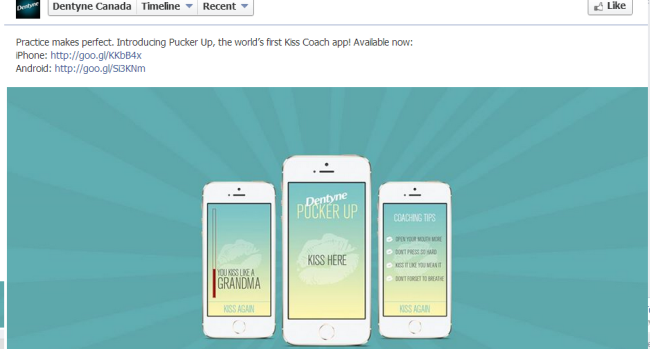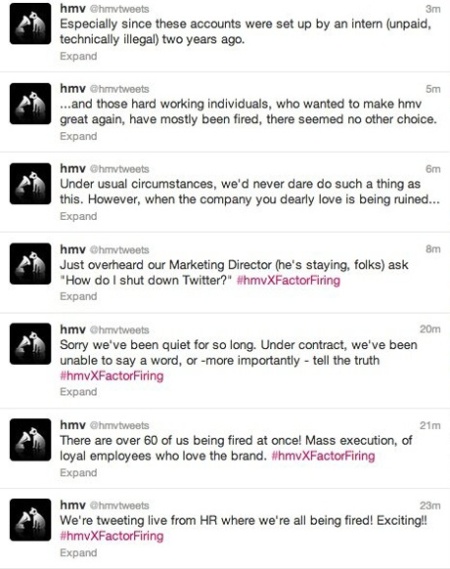Since I started thinking about a career in marketing, I have found myself judging virtually every advertisement that has crossed my path. While it’s admittedly easy to critique a campaign when you aren’t the one who had to do all the grunt work from inception to release, I find myself doing more than the occasional eyebrow raise at more than the occasional promotion.
So, with spring finally starting to show itself, it is with optimistic appreciation I write this weeks blog on Dentyne Ice’s April Fools’ Day gimmick. When I logged onto my Facebook April 1st, I saw a sponsored Dentyne Ice page, promoting a new kissing app. Normally, that kind of cohesion between technology and person wouldn’t be something I’d pay attention to, but as I’m currently enrolled in a Mobile Media course I decided to check it out. However, when I clicked on the information about the app for iPhone, I was redirected to a Google search on April Fools.
I think that I enjoyed Dentyne’s gimmick because it exercised two accounts of acting in a timely fashion. The first is obvious. Tapping into the light-hearted nature of the “holiday” shows a playful side. I think that making the consumer work for the joke by clicking the link was a cool way of making them feel as if they’ve just been directly interacted with in the form of a joke. Secondly, I think the timing for this joke was right because of the rapid rate in which new apps are rolling out. I think rooting their humour within a market trend was a clever way of burying the lead.
All in all, I thought Dentyne’s April Fools’ Day post was funny and well done.





